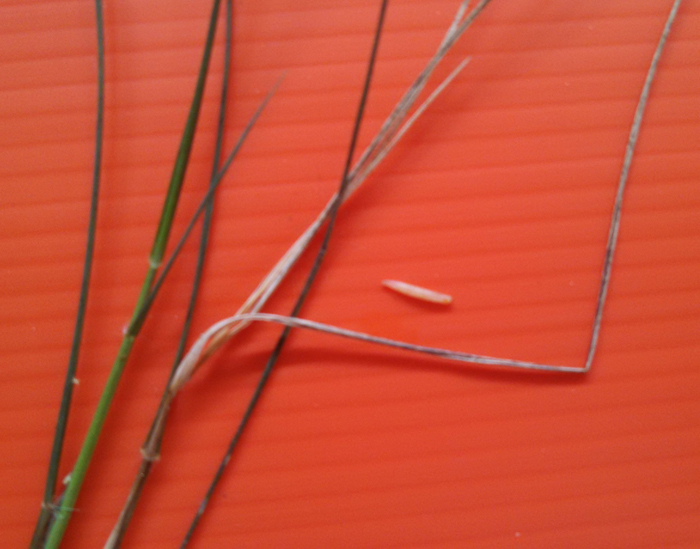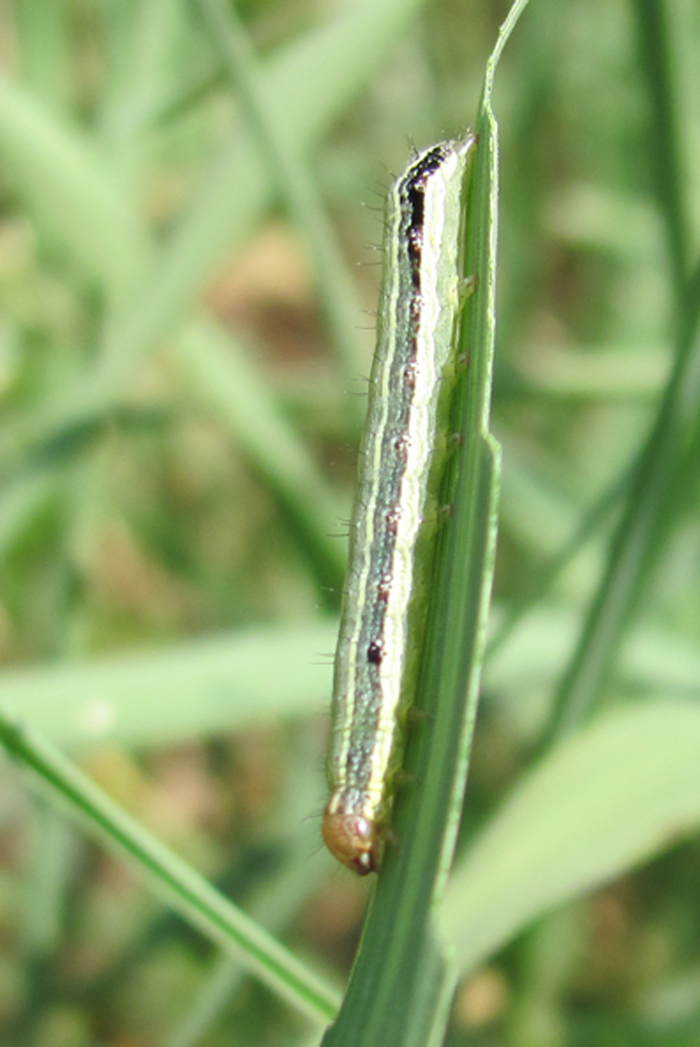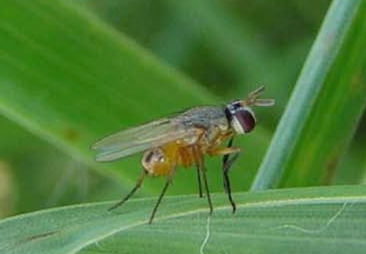
Bermudagrass Stem Maggot found this week in Washington County Coastal Bermudagrass hay field. Photo Credit: Liza Garcia-Jimenez
Bermudagrass Stem Maggot Likely to Increase in North Florida
Liza Garcia-Jimenez, UF/IFAS NFREC IPM Program
The first high populations of Bermudagrass stem maggot (BSM), Atherigona reversura, are now occurring in Central Florida and likely will be seen in North Florida any day now, if not already. The adult stage of this pest are small flies. The flies lay eggs in Bermudagrass fields of all types. The maggots or larva hatch and burrow in the top node of the plant and feed, eventually killing the top leaf shoot. Loss of both quality and quantity of Bermudagrass hay results. Producers should be on the lookout for BSM populations, signs of which are manifested by a brown coloring to the field that should be green.
BSM larvae present in the stems can be detected by splitting the stems down the middle from the tip toward the first node. Early stage larvae will be found in green stems, and late stage larvae in tips that appear to be turning color on one side, while the other side of the stem remains green. Previous infestation of stems that are brown and appear dead can be determined by gently pulling the dead tip out of the stem and looking for evidence of maggot feeding. Mature BSM larvae leave the stems to pupate in the soil and emerge as adult flies in a week to 10 days.
Producers should make a decision about what to do about a stem maggot infestation based on the maturity of the crop, and the level of the infestation. The best remedy is to cut the hay, and worry about the next hay cycle as it occurs. If the hay is weeks from maturity, then the fields may be treated with a pyrethroid insecticide, if the economic return is deemed warranted. The BSM was first detected in GA in 2010 and has since spread across the southern U.S. Thus, we have only a few years of experience and large data gaps in our knowledge of how to manage this pest. UF/IFAS personnel are actively working on a better understanding of BSM and its impact and management.
[important]
If you have a Bermudagrass hay field with BSM you should:
- Contact your local county agent or email Liza Garcia-Jimenez at lizagarcia@ufl.edu with the location and type of Bermudagrass grown in the infested field.
- Fill out our Bermudagrass Stem Maggot Survey to help us learn more about this new pest. Thanks in advance for your assistance!!
[/important]
Producers should also be on the lookout for armyworms. One of the fields where a Stem Maggot fly trap is located was being defoliated by large armyworms, like the one below.

Large armyworms were seen defoliating a Tifton 85 Bermudagrass field this week in Holmes County. Photo credit: Liza Garcia-Jimenez
- Apopka WeevilConfirmed in Jefferson County Nursery - September 14, 2018
- Potential Pests and Diseases of Olives in Florida - October 14, 2016
- Plant Recommendations to Augment Ecosystems Services - February 12, 2016

